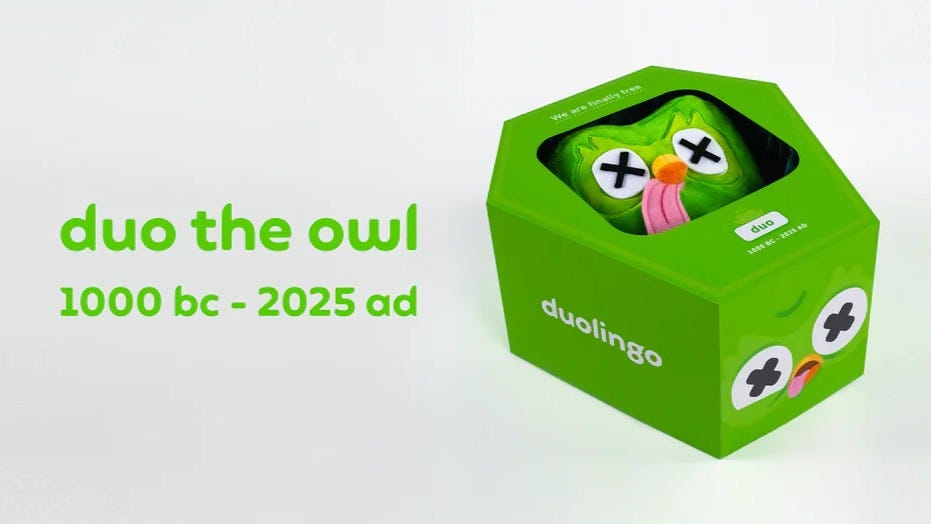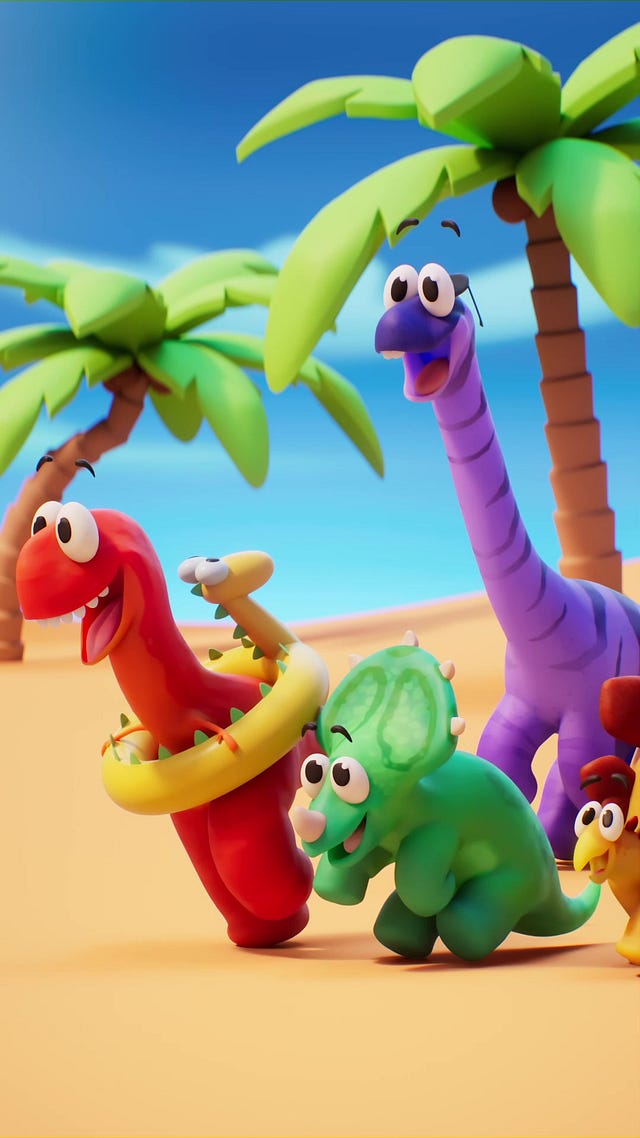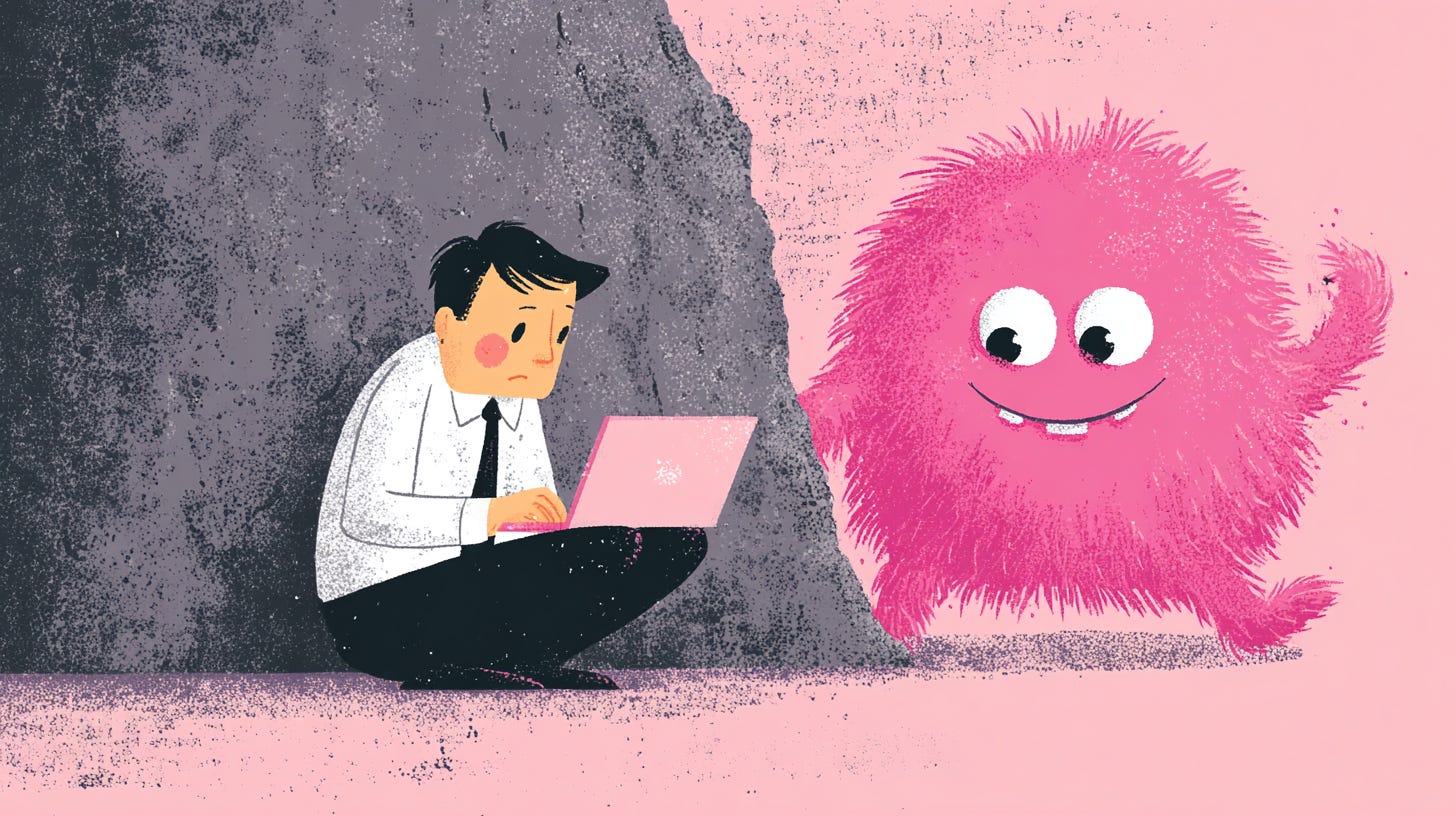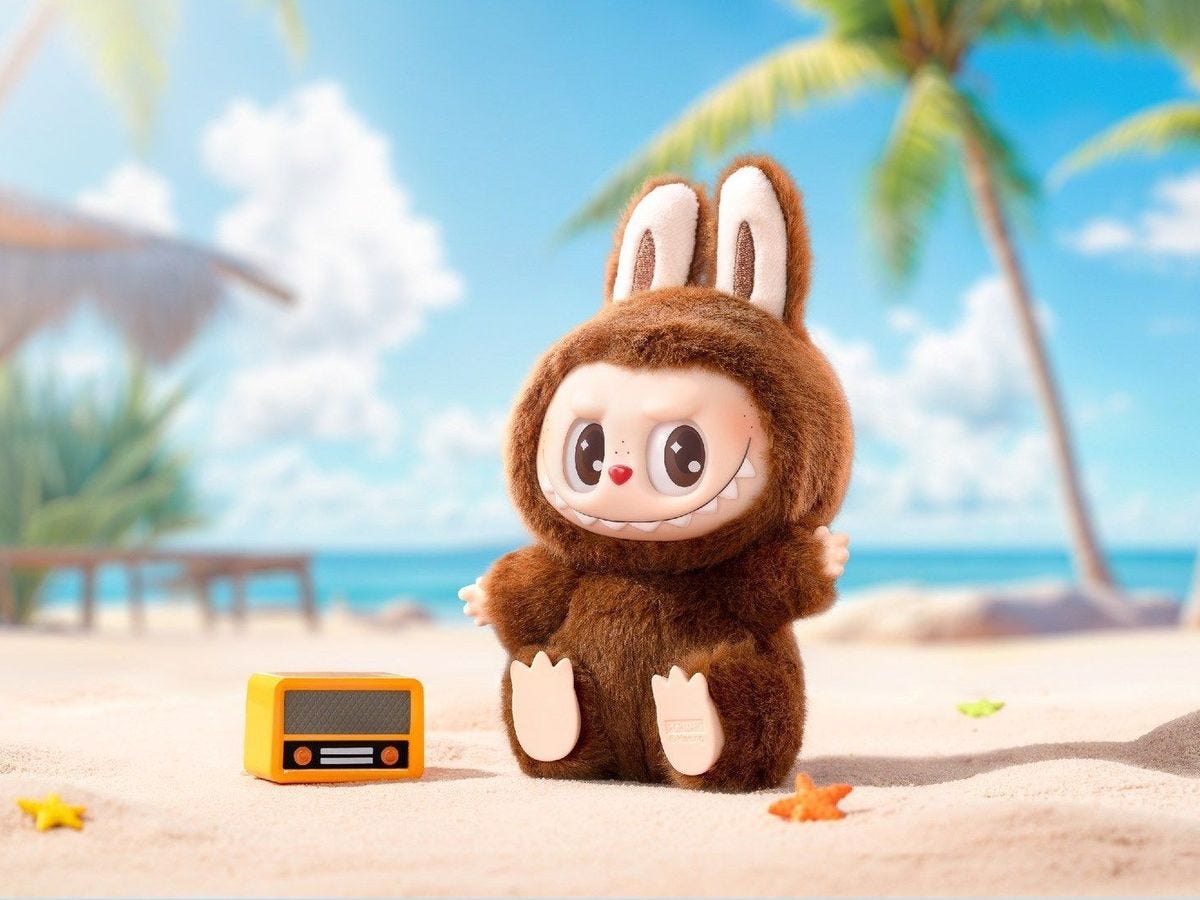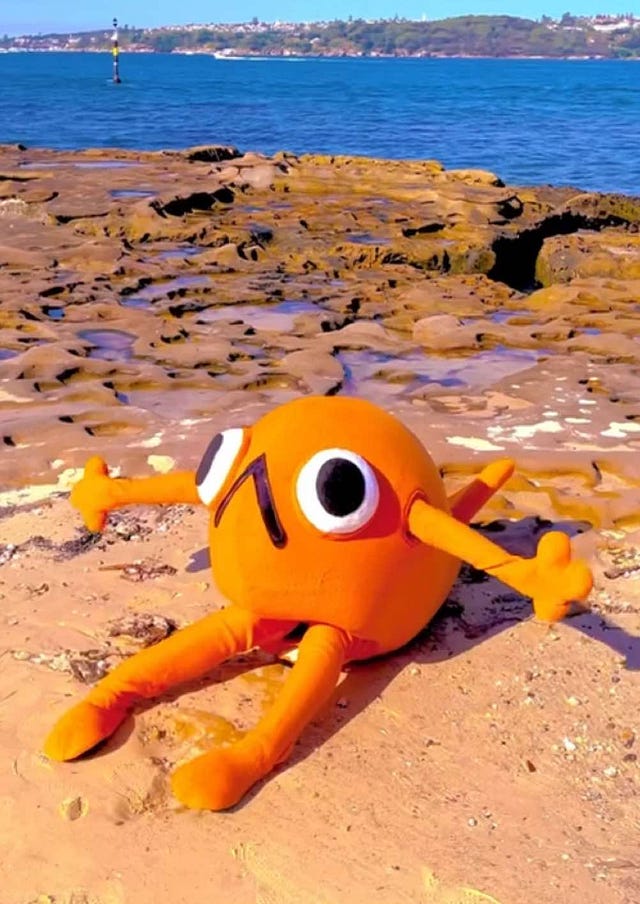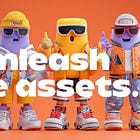🐼 What if mascots are everywhere?
Anyone can make a mascot now. But that's not the point.
Let’s get this out of the way: yes, mascots are having a moment. Finally.
Big brands are doubling down:
PG Tips brought back their iconic monkey and saw a huge engagement spike.
Kellogg’s revived The OG in a gloriously absurd comeback.
McDonald’s returned Uncle O’Grimacey for Paddy’s Day.
Instacart used its Super Bowl ad as a full-blown mascot reunion tour.
Small creators are joining the fun too:
Pinky by Jacob Cass
Calvin Cooks by Haris Spahic
Hat by John Lyons
With GenAI tools exploding—image, video, even 3D generation—anyone can now whip up a brand character that looks like it came out of Pixar. No more six-figure budgets or Hollywood pipelines. Just vibes, prompts, and a little courage.
So if mascots will soon be everywhere—generated in minutes, shared across feeds, showing up in every category—won’t brands just end up swimming in a sea of sameness again?
That’s the fear. But that’s not the reality.
Because just like logos, slogans, and campaigns, a mascot is only as powerful as what you do with it, and why creativity, commitment, and brand-building are the real differentiators.
It’s not the mascot. It’s what you do with it
The brands that win with mascots? They go all in. They make them move, talk, interact, and misbehave. They blend them into the product. They show up in social, in community, in games. They entertain.
Duolingo’s Duo is a great showcase. The bird has a personality, a voice, a narrative arc (RIP Duo, remember?), and a fanbase. They turned a green owl into a chaotic icon by treating it like a celebrity, not a static brand asset.
Compare that to brands that just slap a cute character on a banner and call it a day. It’s lazy cosplay. It’s empty calories. People can smell it.
Entertainment first, always
Brands can’t win on volume. It’s not the amount of pictures or videos they can churn out that will matter. They have to win on feeling (and of course, fame and fluency).
Craft still matters—a lot. Just look at:
Claynosaurz: building a cinematic universe with absurd levels of detail and charm.
Nobody Sausage: a dancing sausage with a global cult following.
The whole ‘Steve Le Possion’ was all about a well-crafted song, a cute character, and great animation.
It’s funny, it’s well done, it’s relatable, it makes you laugh, and it’s a huge opportunity for brands to tell stories through characters and animation
Mascots are infinite
Worried the market’s too crowded? Look at Japan. Every city, product, and mascot-worthy vending machine has a character. A bear, a blob, a walking toilet seat—it doesn’t matter. More mascots do not lead to ‘less recognition’, it leads to brands excelling at their game and brands falling behind.
Your mascot could be anything:
A stressed-out intern
A talking rock
A sentient banana
The problem is not the number of mascots, it’s their uniqueness. As with a lot of issues in brand building, they start with designers following trends blindly. Recently, we’ve seen a ridiculous number of walking pizzas and waving coffee cups. The result? A sea of sameness and totally forgettable mascots for everyone.
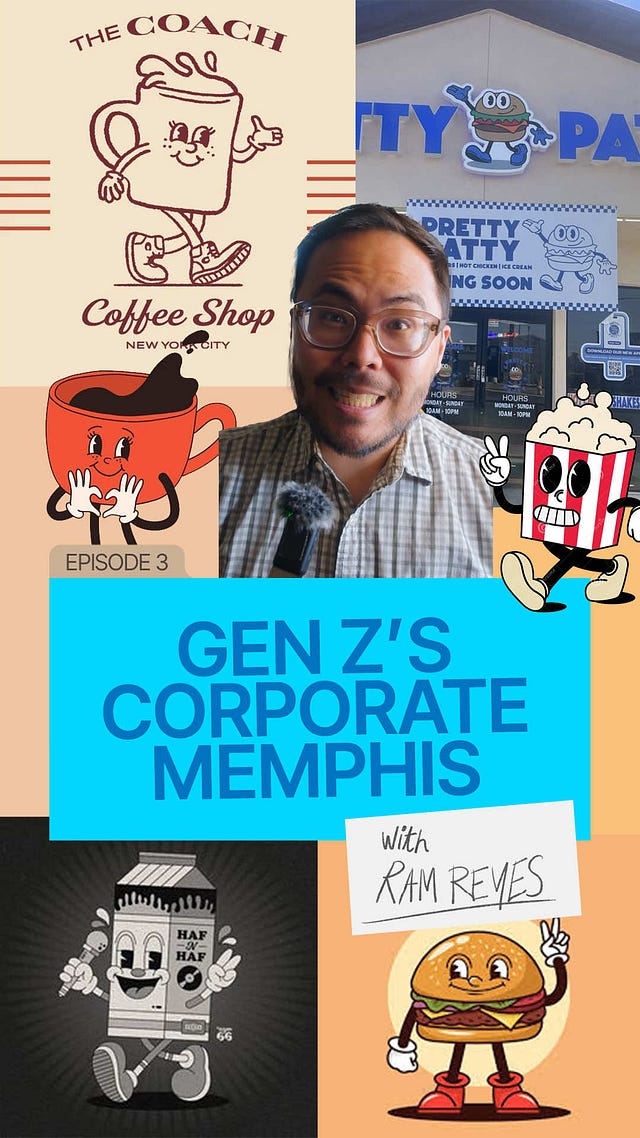
 Tiktok failed to load.
Tiktok failed to load.Enable 3rd party cookies or use another browser
So the problem is not the form factor. On the contrary, we remember creatures more than we remember logos. That’s just brain wiring.
The real problem? Creative fear.
Most brands could do something wild and great with mascots. But they don’t. Because this isn’t “marketing”—it’s entertainment. And that freaks people out.
They’ll crank out 100 SEO blogs before they let a talking raccoon say something funny on TikTok.
The tools are here. What’s missing is the ability and freedom to take risks.
The brand manager is becoming a puppet (Literally)
This is where it gets fun.
From video to video models like Runway’s Act One, Modify video from Luma Labs and to real time rendering using Unreal, you can perform your mascot. You are the puppet. You become the brand.
And with LLMs getting smarter, faster and more natural? We’re entering the era of interactive mascots:
Talk to your mascot
Let it help, joke, sell, vibe
Clippy 2.0, but actually good.
Not just Pixar polish anymore.
As creatives get more comfortable with AI, we will push beyond the boring aesthetics that are currently dominating the AI space (think Pixar-style CGI, Gorilla vlogging, …) and we’ll venture into new, creative, and highly distinctive looks for our character.
Midjourney-style chaos: Midjourney is pushing the boundaries of the whole AI look & feel, with unique visuals and more artistic animation styles
Animal Act: VHS-style weirdness + animated chaos
You don’t need polish—you need personality.
Let’s get physical.
Mascots aren’t just digital fluff—they’re real.
The recent La Bubu hype is no coincidence.
3D-printed figurines? Easy. Full-blown suits like Duolingo’s IRL twerking owl? That’s a thing.
Mascots make your brand huggable. Touchable. Memorable.
 Tiktok failed to load.
Tiktok failed to load.Enable 3rd party cookies or use another browser
Mascots shouldn’t live alone.
Mascots aren’t the end. They’re the portal.
To make it work, you need a whole brand universe:
A specific vibe (think Vacation Inc)
A way to play ( just see how many people created their own variation of Steve Le Poisson)
As I said in my docu on mascots and my recent article on generative brands, GenAI just made it easier than ever to build a character and perform it.
The main challenge won’t be creating mascots; it will be finding ways to unleash them in ways your audience will never forget.




